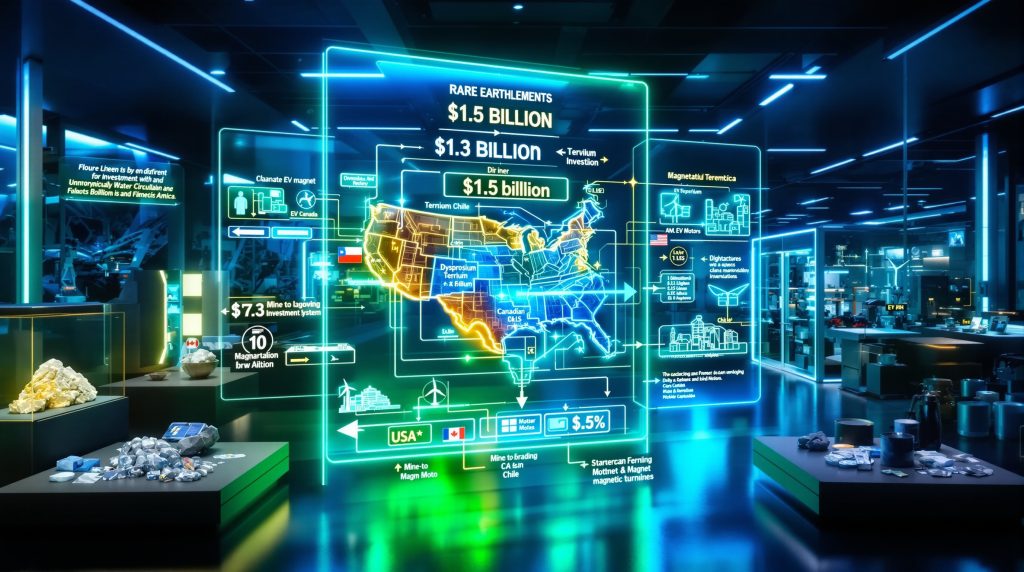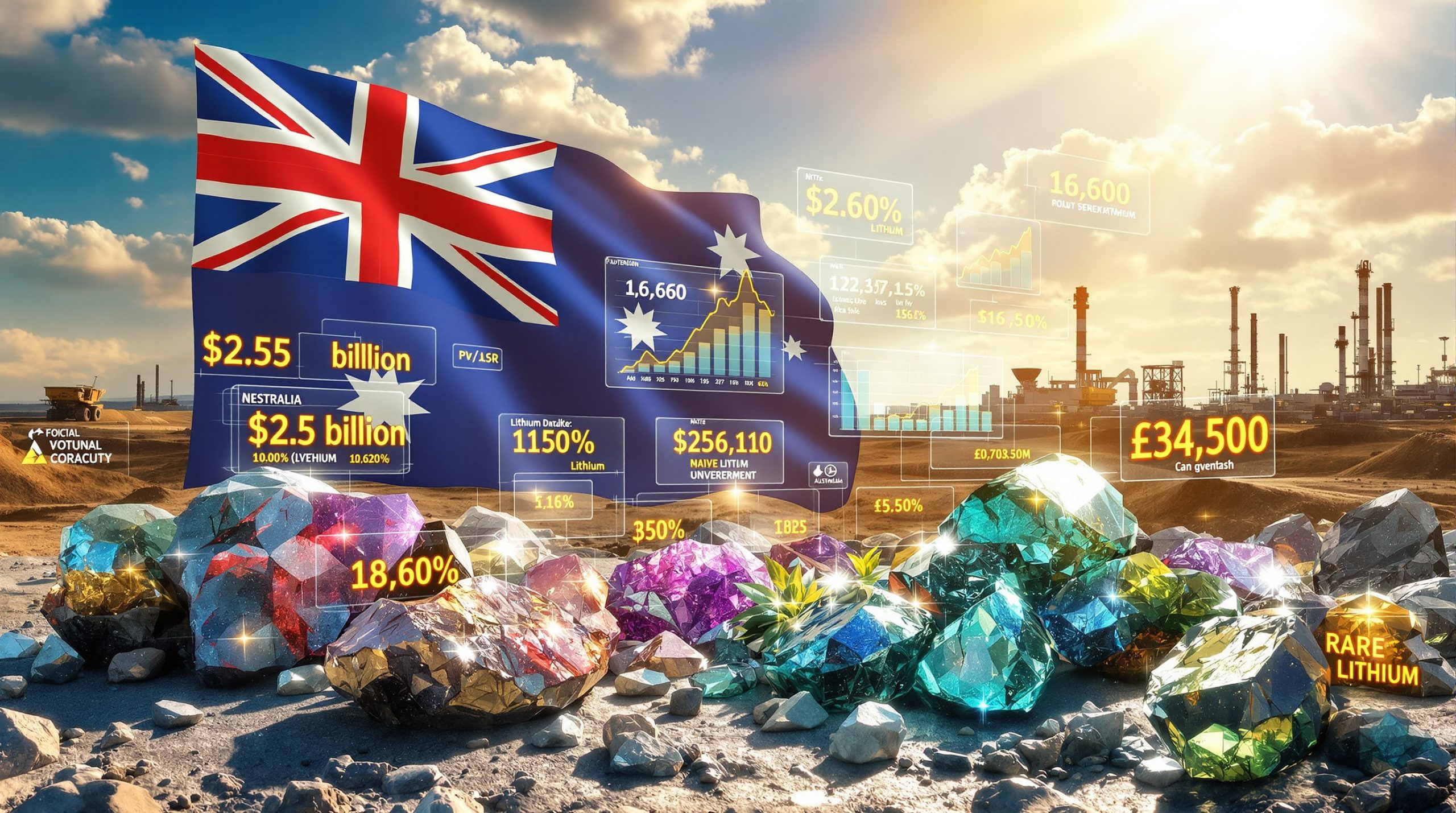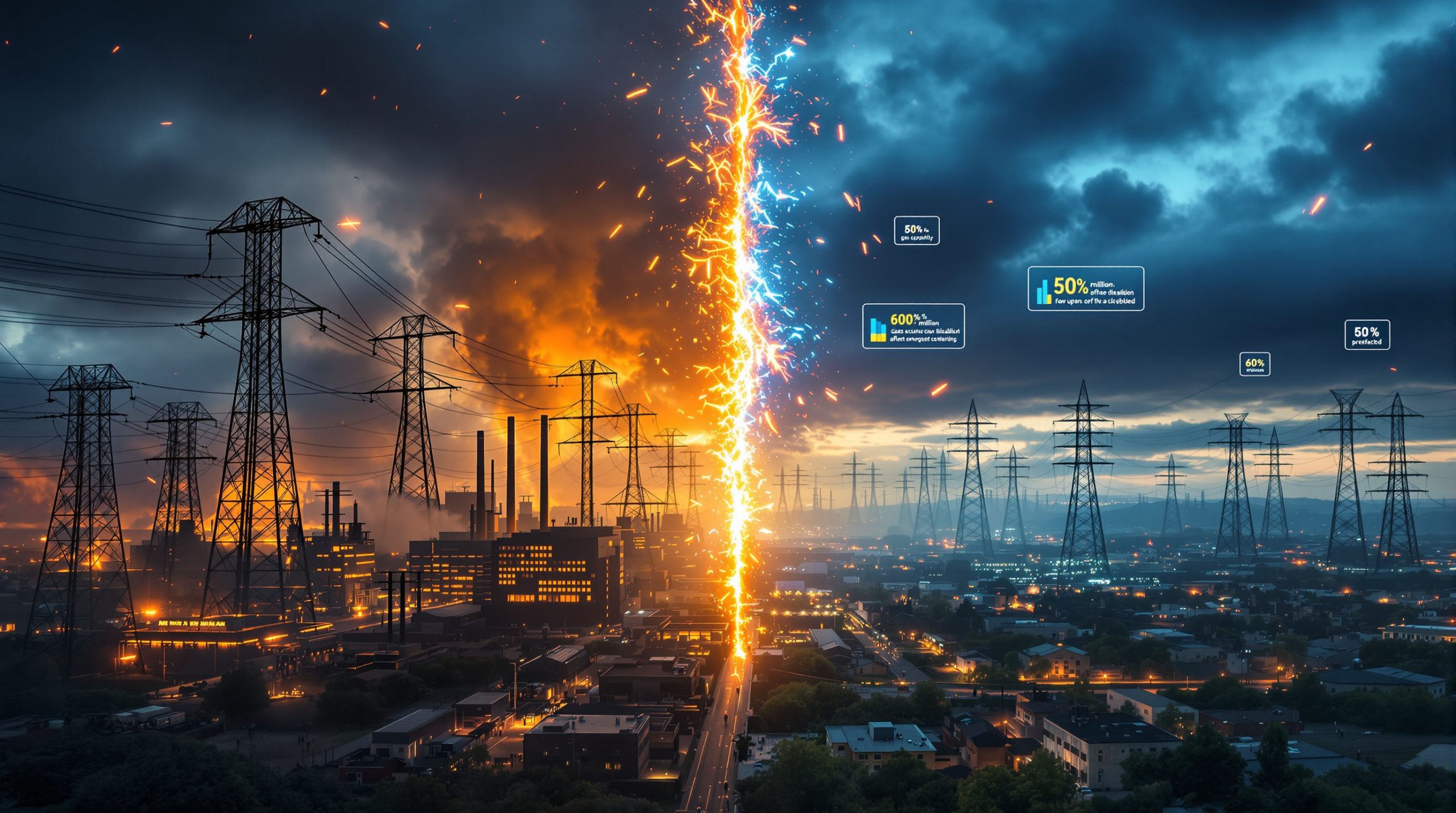Aclara Resources: Pioneering a Western Rare Earths Supply Chain
Aclara Resources is making significant strides as a Canadian rare earths company strategically establishing a complete Western supply chain for critical rare earth elements. With an ambitious $1.3 billion investment plan spanning mining operations in South America and processing facilities in the United States, Aclara is positioning itself as a key player in reducing Western dependence on Chinese rare earth supplies.
The company's comprehensive approach to building a geopolitically independent supply chain addresses growing concerns about resource security for materials essential to modern technology and critical minerals demand surge. This investment strategy represents one of the most significant commitments to developing non-Chinese rare earth capabilities in recent years.
Why Are Rare Earth Elements Critical for Modern Technology?
Rare earth elements (REEs) comprise 17 metals with unique magnetic, optical, and conductive properties that make them indispensable in today's technological landscape. Despite their name, most REEs are relatively abundant in the Earth's crust, but they rarely occur in concentrated deposits that are economically viable to extract.
These elements serve as critical components in:
- Electric vehicle motors and batteries
- Wind turbine generators
- Advanced defense systems and military equipment
- Consumer electronics including smartphones and laptops
- Medical imaging equipment
- Robotics and automation systems
The strategic importance of REEs continues to grow as energy transition security becomes a priority globally. According to industry analysts, demand for rare earths in clean energy applications is projected to increase substantially over the next decade as countries pursue decarbonization goals.
Their unique properties make them difficult to substitute with alternative materials, creating potential supply vulnerabilities for industries dependent on these resources.
How Is Aclara Structuring Its $1.3 Billion Investment?
Aclara's investment strategy follows a comprehensive mine-to-magnet approach designed to create a vertically integrated supply chain. The company has outlined specific allocations across different operational segments:
- $150-170 million allocated for Chilean mining operations
- $600 million designated for Brazilian mining development
- $300-400 million earmarked for a separation plant
- $400 million planned for a metallization facility
This strategic allocation aims to create a vertically integrated supply chain capable of producing finished rare earth products for high-tech applications. By controlling multiple stages of the supply chain, Aclara hopes to mitigate risks associated with processing bottlenecks that have historically constrained Western rare earth development.
Jose Augusto Palma, executive vice-president of Aclara Resources, emphasized that this investment structure positions the company's "mine-to-magnet strategy as a way to build a geopolitically independent supply chain for permanent magnets" essential for advanced technology applications.
What Makes Aclara's Mining Technology Environmentally Distinctive?
Circular Mineral Harvesting Technology
Aclara is developing proprietary extraction methods that aim to significantly reduce the environmental footprint associated with rare earth mining. Traditional rare earth mining and processing has often resulted in considerable environmental impacts, including acid mine drainage, radioactive waste management challenges, and extensive land disturbance.
The company's approach specifically targets ionic clay deposits rich in heavy rare earths. These deposits are generally considered more advantageous to process compared to hard rock deposits that require intensive crushing, grinding, and chemical processing.
Environmental benefits being pursued through their development program include:
- Reduced energy consumption compared to conventional mining
- Water conservation through recycling and reuse systems
- Minimized land disturbance through selective extraction methods
- Reduced chemical usage in processing operations
This approach reflects growing industry recognition that environmentally friendly mining will play an increasingly important role in determining which rare earth projects can secure financing and regulatory approval in Western jurisdictions.
What Timeline Is Aclara Following for Project Development?
The company has outlined a clear development roadmap with specific milestones:
| Development Stage | Expected Timeline |
|---|---|
| Feasibility studies completion | Mid-2026 |
| Construction commencement | 2026 |
| Operations beginning | 2028 |
This accelerated timeline reflects both the strategic urgency of developing Western rare earth supplies and Aclara's confidence in its project fundamentals. The company inaugurated a semi-industrial heavy rare earths pilot plant in Brazil in April 2025, demonstrating progress toward its development goals.
Industry experts note that this timeline is ambitious but potentially achievable given the company's focus on ionic clay deposits, which generally have shorter development timeframes than hard rock rare earth projects.
How Is Aclara Securing Project Financing?
U.S. Government Support
Aclara has engaged with multiple U.S. government agencies regarding potential financing support, leveraging growing concerns about supply chain security for critical minerals. The company recently received a commitment of up to $5 million from the U.S. International Development Finance Corporation to support the feasibility study for its Brazil project.
This governmental interest aligns with broader Western policy initiatives to reduce dependency on Chinese rare earth supplies. Under the Trump administration, the United States has continued to prioritize critical minerals security through various programs aimed at supporting domestic and allied nation resource development.
In July 2025, Aclara disclosed ongoing discussions with U.S. Government agencies about potential financing for its plans to mine rare earths in Latin America, indicating sustained interest from public financing sources in supporting alternative supply chain development.
Private financing will likely complement public support, though the capital-intensive nature of rare earth processing facilities presents challenges for project developers. The company's ability to secure the full $1.3 billion investment package will be a critical factor in determining whether its ambitious timeline can be achieved.
What Strategic Partnerships Is Aclara Developing?
Developing a complete rare earths supply chain requires specialized expertise across multiple technical domains. Aclara is actively building strategic partnerships to strengthen its capabilities across the value chain.
Key aspects of their partnership approach include:
- Establishing Aclara Technologies Inc. as their U.S.-based entity for downstream processing
- Pursuing relationships with established industry players in metallurgy and materials science
- Engaging with potential off-take partners in high-tech manufacturing sectors
- Collaborating with research institutions on processing technology optimization
These partnerships are crucial for addressing technical challenges associated with rare earth separation, processing, and magnet manufacturing—areas where Western capabilities have atrophied as production shifted to China over recent decades.
Which Specific Rare Earth Elements Is Aclara Targeting?
Aclara's projects focus particularly on heavy rare earth elements, which represent the most supply-constrained segment of the rare earths market. The company's semi-industrial heavy rare earths pilot plant facility in Brazil provides a clear indication of this strategic focus.
Heavy rare earths include:
- Dysprosium
- Terbium
- Holmium
- Erbium
- Other heavy lanthanide elements
These elements are particularly critical for high-performance permanent magnets used in electric vehicles, wind turbines, and defense applications. They typically command premium prices compared to light rare earths such as cerium and lanthanum, which are relatively more abundant and less supply-constrained.
The focus on heavy rare earths represents a strategic targeting of the market segment with the highest value and most significant supply security concerns.
How Does Aclara's Approach Compare to Existing Rare Earth Producers?
Aclara's strategy differentiates itself from existing producers in several important ways:
- Resource Type: Focus on ionic clay deposits rather than the hard-rock mining that dominates most non-Chinese production
- Geographical Diversification: South American resource base rather than the North American or Australian deposits that have received more attention
- Value Chain Integration: Comprehensive mine-to-magnet approach rather than focusing solely on mining or processing
- Environmental Emphasis: Prioritization of reduced environmental impact in project design and operation
This differentiated approach positions Aclara as complementary to other Western rare earth developments. While companies like MP Materials have focused on revitalizing existing operations at sites like Mountain Pass in California, Aclara is pursuing greenfield development with next-generation technologies.
The company's dual-continent strategy—mining in South America with processing in North America—also represents an innovative approach to balancing operational factors like energy costs, labor availability, and proximity to end markets.
What Are the Investment Implications of Aclara's Strategy?
For investors considering rare earth exposure, Aclara offers several distinctive characteristics that differentiate it within the sector:
- Vertical Integration: Potential for capturing value across multiple segments of the supply chain
- Geopolitical Alignment: Strategic positioning aligned with Western government priorities for supply chain security
- Heavy Rare Earth Focus: Concentration on higher-value elements with more constrained supply
- Environmental Differentiation: Emphasis on reduced impact extraction methodologies
- Jurisdictional Diversification: Exposure across South American mining and North American processing
These factors create a unique investment profile within the rare earths sector. However, investors should recognize that rare earth projects face significant execution risks related to technical complexity, capital intensity, and market development challenges.
The company's success will depend on its ability to:
- Secure the full financing package required for implementation
- Navigate permitting processes across multiple jurisdictions
- Achieve technical performance targets for recovery and processing
- Develop market relationships with end users of rare earth products
How Might Aclara Impact Global Rare Earth Supply Dynamics?
When fully operational, Aclara's projects could significantly alter global rare earth supply patterns in several important ways:
- Provide a major new source of heavy rare earths outside Chinese control
- Create new supply chain connections between South American resources and North American manufacturing
- Establish precedent for environmentally responsible rare earth extraction
- Support growth of non-Chinese magnet manufacturing capacity
These developments would represent meaningful progress toward diversifying global rare earth supply chains. However, the impact should be viewed in context—even with successful implementation, Chinese producers will likely maintain significant market share and technical advantages developed over decades of industry dominance.
The true significance of Aclara's efforts may lie in demonstrating viable pathways for Western supply chain development rather than in dramatically shifting global market shares in the near term. Furthermore, the success of such ventures will be crucial for Australia's critical reserves strategy and similar initiatives worldwide, including India's minerals mission.
Looking Ahead: Challenges and Opportunities
As Aclara advances its ambitious plans, several factors will influence its prospects for success:
- Technical Execution: The company's ability to scale up pilot operations to commercial production while maintaining projected cost structures
- Market Development: Growth in demand for high-performance magnets in clean energy and advanced technology applications
- Competitive Landscape: Response from established Chinese producers and other emerging Western suppliers
- Policy Environment: Evolution of government support mechanisms for critical minerals development
Disclaimer: This analysis contains forward-looking statements about future developments in the rare earths market. Actual outcomes may differ substantially from projections based on technological, market, regulatory, and competitive factors beyond any individual company's control. Investors should conduct their own due diligence before making investment decisions.
Want to Invest in the Next Mineral Discovery Before the Market Finds Out?
Discover significant ASX mineral discoveries ahead of the broader market with real-time alerts from Discovery Alert's proprietary Discovery IQ model, helping you identify actionable investment opportunities before they surge in value. Explore the historic returns of major mineral discoveries at https://discoveryalert.com.au/discoveries/ and position yourself for potential market-beating gains.




